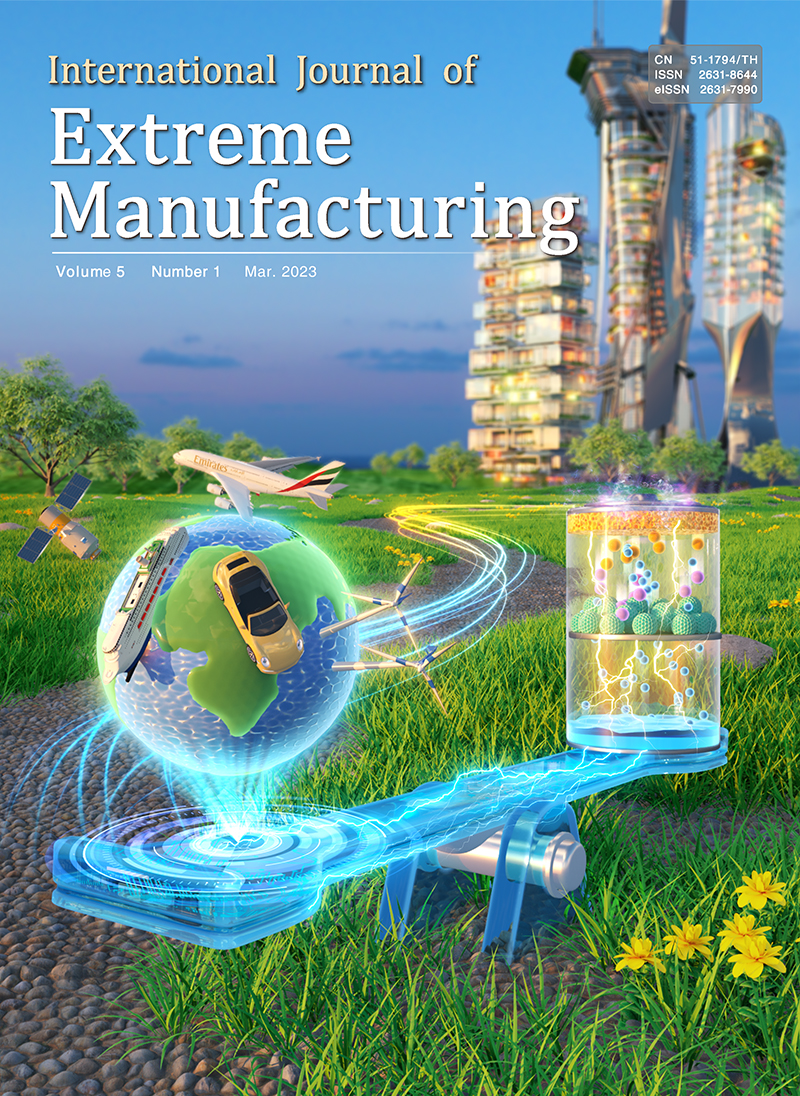REVIEW ● OPEN ACCESS Read More
Qi Ge, Zhiqin Li, Zhaolong Wang, Kavin Kowsari, Wang Zhang, Xiangnan He, Jianlin Zhou and Nicholas X Fang
1. Introduction
Projection Micro Stereolithography (PμSL) is a high-resolution (up to 0.6 μm) 3D printing technology based on area projection triggered photopolymerization. Because of its capability of fabricating complex 3D architectures covering multiple scales and with multiple materials, PμSL has been applied to various fields including mechanical metamaterials, optical components, 4D printing, bioinspired materials and biomedical applications. Prof. Qi Ge, Zhiqin Li, Prof. Zhaolong Wang, Jianlin Zhou, and Prof. Nicholas Fang from Southern University of Science and Technology, BMF Material Technology Inc., Hunan University, Massachusetts Institute of Technology published a review of "Projection Micro Stereolithography Based 3D Printing and Its Applications" in "International Journal of Extreme Manufacturing" (IJEM), which systematically introduced the research background, the latest progress and the future outlook of PμSL.
2. Research Background
Additive manufacturing, also known as 3D printing, is a rapid prototyping technology that fabricates 3D objects by a layer-by-layer fashion. Compared with traditional manufacturing approaches, 3D printing is capable of fabricating high-resolution complex 3D geometries, material-efficient, easier to use. Therefore, 3D printing has been applied to a variety of fields including aerospace, biomedicals, electronics as well as automobiles. Since its invention, 3D printing has evolved various technologies such as Fused Deposition Modeling (FDM), Direct Ink Writing (DIW), Inkjet, Stereolithography (SLA), Selective Laser Sintering/Melting (SLS/SLM), Two Photon Polymerization (TPP) as well as Digital Light Processing (DLP) based Continuous Liquid Interface Production (CLIP), High-area Rapid Printing (HARP), and Projection Micro Stereolithography (PμSL). Among those different 3D printing technologies, PμSL is the one that is capable of printing complex 3D structures with high resolution and wide printing area (Figure 1). Therefore, PμSL has been applied to frontier research fields to fabricate highly complex 3D structures, which has generated a series of impactful research outcomes. Prof. Qi Ge, Prof. Zhaolong Wang and Prof. Nicholoas Fang collaborating with BMF Material Technology Inc. gave a detailed introduction to the recent progress of PμSL and its applications.

Figure 1. The diagram summarizes the printing resolution and printing area relation.
3. Recent Advances
PμSL is a 3D printing technology that fabricates 3D objects by decretizing 3D model into 2D images which are projected onto the surface of polymer resin to trigger the local photopolymerization. Through the optimization of optical system, light source and processing, PμSL achieves high printing resolution up to 0.6 μm. Because of its capability of rapidly fabricating complex 3D structures with high resolution, multiscale and multimaterial, PμSL has been applied to fabricate mechanical metamaterials, optical devices, 4D printing, bioinspired materials as well as biomedicals. By upgrading the existing PμSL 3D printing technology (Figure 2a), BMF Material Technology Inc. has successfully translated PμSL to industrial 3D printing systems which are capable of 3D printing structures with both high resolution and large area (printing resolution: 2 μm, printing area: 50 mm×50 mm; printing resolution: 10 μm, printing area: 94 mm×52 mm), and have been applied to print industrial applications such as mechanical metamaterials, biomedical devices, micro mechanical devices, precision structural parts, and others (Figure 2b-j).

Figure 2. PμSL 3D printing technology and its industrial applications. (a) Schematics of the high resolution large area PμSL 3D printing system. (b)-(j) Typical industrial applications.
Multiscale, multimaterial 3D printing
As shown in Figure 3a, the approach that combines projection with image scanning has been used to realize multiscale 3D printing. The air-jet assisted PμSL (Figure 3b) and fluidic control PμSL (Figure 3c) have been reported to enable high speed multimaterial 3D printing.
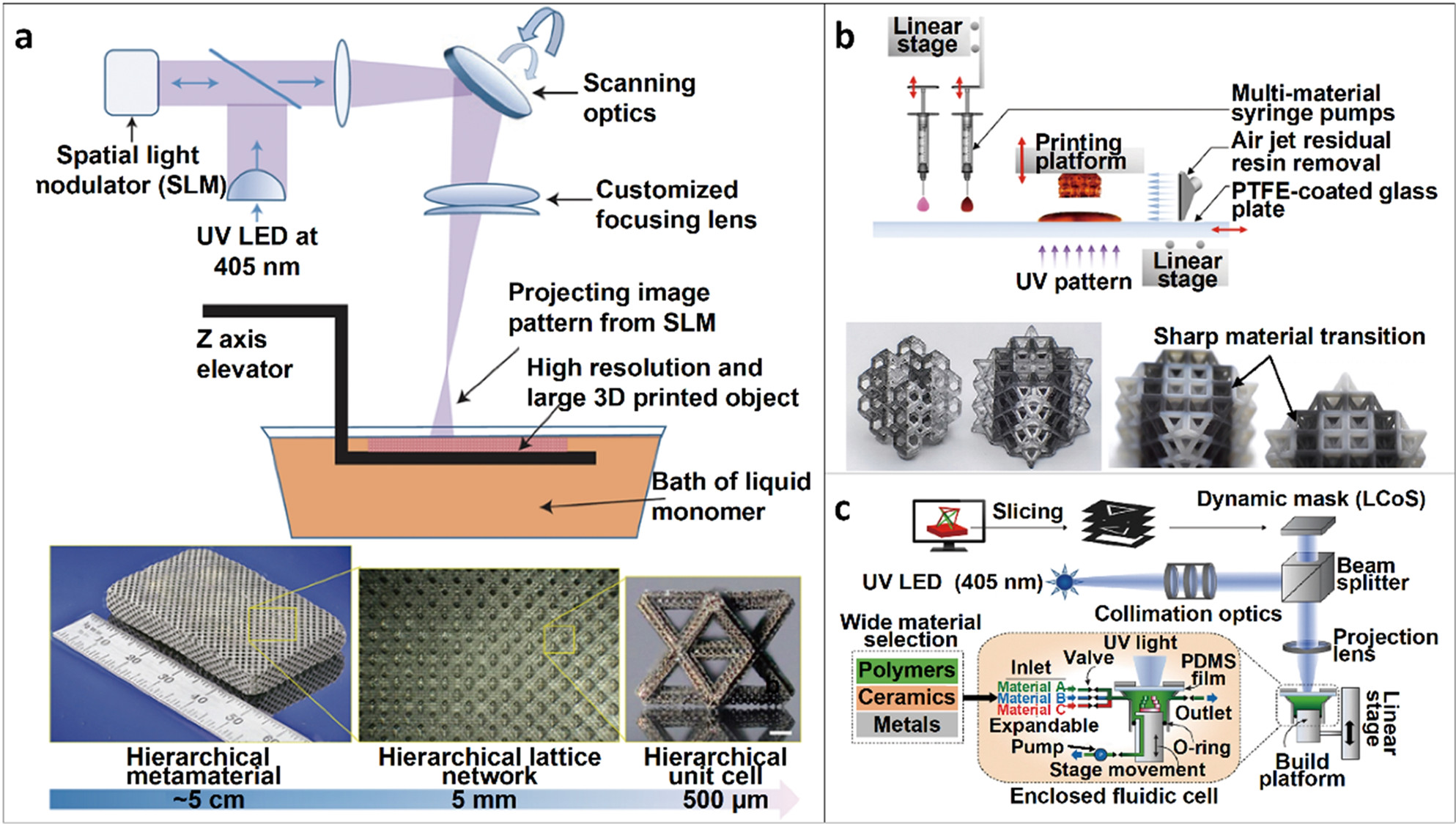
Figure 3. Multiscale, multimaterial 3D printing. (a) Combination of projection and image scanning to realize multiscale 3D printing. (b) Air-jet assisted multimaterial 3D printing system. (c) Fluid control multimaterial 3D printing system.
Mechanical metamaterials
As shown in Figure 4a, the PμSL system successfully fabricates the ultralight, ultrastiff mechanical metamaterials that are constructed by the stretch-dominated octet truss based unit cell. As shown in Figure 4b, the PμSL system prints negative thermal expansion metamaterials that are constructed with two materials with different stiffnesses and coefficients of thermal expansion (CTE).
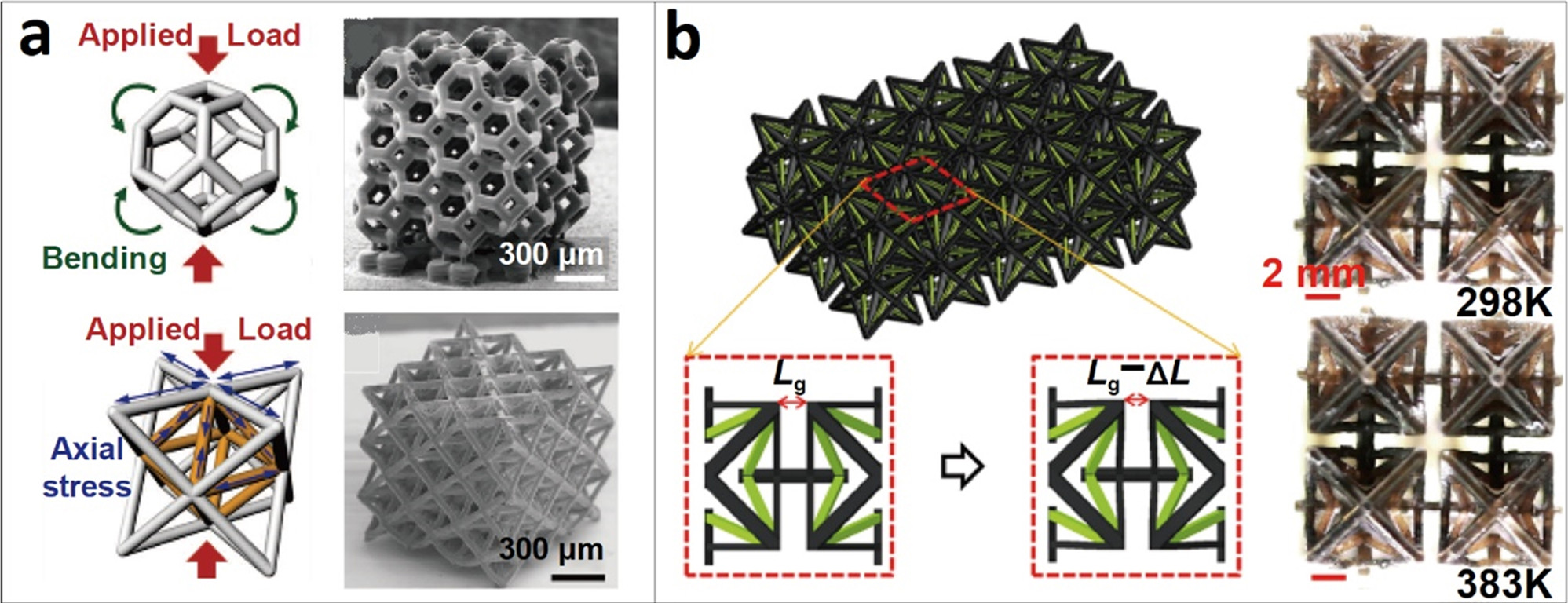
Figure 4. Mechanical metamaterials. (a) Ultralight, ultrastiff mechanical metamaterials. (b) Mechanical metamaterial with negative CTEs.
Optical devices
PμSL enables the fabrication of optical lens (Figure 5a) by combining grayscale exposure and dip-coating, and the fabrication of microlens array (Figure 5b) with nanoscale surface smoothness by combining project oscillation with grayscale printing.

Figure 5. Optical devices. (a) The combination of grayscale exposure and dip-coating to print optical lens. (b) The combination of project oscillation and grayscale print to fabricate microlens array.
4D printing
By developing shape memory polymer resin, PμSL realizes 4D printing with large deformation (Figure 6a), multimaterial 4D printing (Figure 6b), self-healing 4D printing (Figure 6c), 4D printing metamaterials (Figure 6d) and 4D printing energy absorbing structures (Figure 6e).
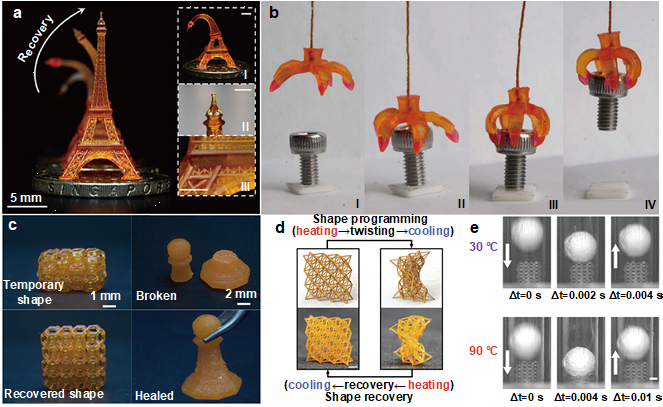
Figure 6. 4D printing. (a) 4D printing with large deformation. (b) Multimaterial 4D printing. (c) Self-healing 4D printing. (d) 4D printing metamaterials. (e) 4D printing energy absorbing structures.
4. Future Prospects
Despite of the recent rapid development, the evolution of PμSL into a more powerful 3D printing approach faces the following challenges such as big image data processing and storage, precise voxel printing in PμSL based multimaterial 3D printing, high-resolution ceramic printing.
5. About the Authors

Dr. Qi Ge, Associate Professor from Southern University of Science and Technology, has long been engaged in the research of projection micro stereolithography based 3D printing. His research fields also include 4D printing, multifunctional 3D printing, mechanics of soft materials, soft robotics, and flexible electronics.
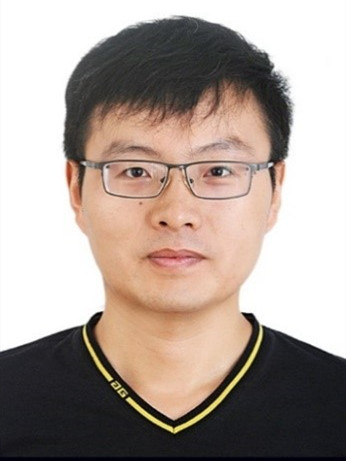
Dr. Zhaolong Wang, Assistant Professor from Hunan University, has long been engaged in the research of projection micro stereolithography based 3D printing. His research fields also include optical metamaterials, microflow and thermal control.

Dr. Nicholas X. Fang, Professor from Massachusetts Institute of Technology, has long been engaged in in the research of projection micro stereolithography based 3D printing. His research fields also include nano-photonics, acoustic metamaterials, nano/micro manufacturing and soft materials.







